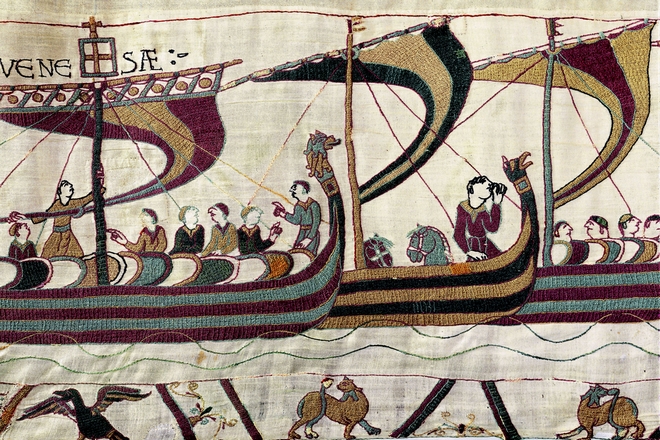
Bayeux Tapestry Norman Ships with Dragon Prows as “Figureheads” (image public domain)
By Timothy Demy –
The carving and painting of eyes, faces, and figures on boats and ships is an ancient practice that continues around the globe in the present day. Whether the eyes were decorative, religious, or believed to help the boat see its way through known and unknown waters, carving and painting boats and ships was not unusual. Phoenicians, Egyptians, Greeks, Romans, and Vikings all had some type of carving or painting at the fore or onto the bow of their boats and ships. Sometimes they were apotropaic devices meant to protect the ships, so monsters are frequent at the prow along with the painted eyes below on the forefront of the hull to guide. Such carvings eventually came to be known as figureheads.
Many maritime museums have displays of figureheads from recent centuries. Large collections are curated at the National Maritime Museum along with the Cutty Sark Museum in Greenwich, England, the Peabody Essex Museum in Salem, Massachusetts, and at the Mystic Seaport Museum, in Mystic, Connecticut. Others can be found around the globe in many countries in collections such as those in Scotland, Spain, Russia, and New Zealand. Not limited to museums, figureheads also appear on the pages of literature by writers such as Herman Melville, Elizabeth Barrett Browning, and Rudyard Kipling
Egyptian and Phoenician ships had representations of sacred birds and horses to protect the ship and its crew. The ancient Greeks carved and boars’ heads to symbolize vision and aggression. The carvings on Roman ships were often those of a centurion and were representations of bravery and military prowess. Later, as mentioned, Vikings ships also used dragon figureheads in the belief that they would protect the long ship from evil spirits. The tradition of figureheads passed to Asia and then back to Europe in the medieval era. During this period, northern European ships often used representations of dragons, dolphins, and bulls as figurehead.
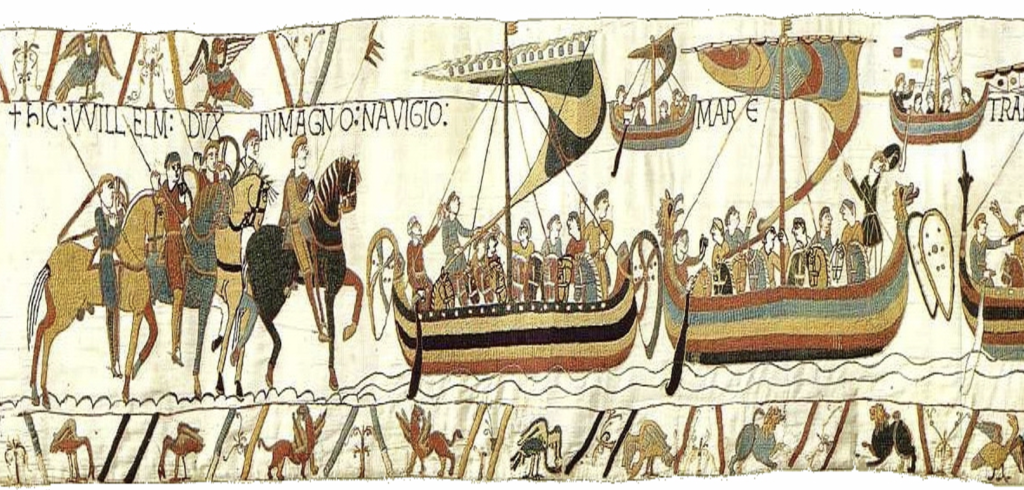
Fig. 1 Bayeux Tapestry tableau of Norman invasion ships of William the Conqueror (ca. 1066) (Image public domain)
The famous Bayeux Tapestry created in the 11th century shows carved dragon figureheads (Fig. 1) on the stern and bow of the ships of William the Conqueror, fairly typical for Viking longships. In the 13th century there was the introduction gentler creatures such as swans that represented graceful mobility in the water. Later, representations of women, some fully clothed, and some partially clothed, became one of the most popular subjects for figurehead. The latter carvings were based in part in lore and maritime superstition that held that the topless or partially-clad female figure would entice the gods and spirits of the seas to allow the ship to pass through its waters without harm. This dates back centuries, at least to the first century, when in 77 CE, Pliny the Elder (wrote in his book Natural History, “. . . out at sea, a storm may be lulled by a woman uncovering her body . . .” (Nat. Hist. 28.23).
In the New Testament book of the Acts of the Apostles there is a 1st-century reference a figurehead on a ship from Alexandria. The narrative pertains to St. Paul being taken by ship as a prisoner to Rome and the shipwreck off Malta that ensued. In Acts 28:11, we read: “After three months we set sail in a ship that had wintered in the island, a ship of Alexandria, with the twin gods as a figurehead” (ESV). The reference to the “twin gods” is that of the “Dioscuri” (Greek), which was a joint name for the pagan deities Castor and Pollux. Also called the “Heavenly Twins,” according to Greek mythology, Castor and Pollux, twin brothers, were the sons of Zeus and Leda. To see their stars, the two brightest in the constellation Gemini, was considered good fortune for mariners who would call upon them for help during storms (Epictetus Discourses 2.18.19; Lucian of Samosata, The Ship 9). Elsewhere, we read also of Castor and Pollux in the writings of Homer, Hesiod, and Pindar.
However, it is the 16th to 19th centuries in Europe and North America that one finds the most elaborate and largest of these carvings known as figureheads. Used on naval as well as merchant ships, figureheads became symbols of power and wealth as well as something decorative or patriotic. The 19th century was apex of the carving of figureheads with every major seaport having craftsmen and artisans making them. There have been at least 150 British ship-carving firms in the 18th and 19th centuries. There were shops and businesses that did only ship figureheads and there were others that also were furniture or cabinet makers. Other carvers worked as ship carpenters and sign makers for local pubs, inns, and shops. Further, some were also associated with the carving of the cigar store Indian or wooden Indian figures that were used in advertising tobacconists. (Use of the carved likeness of a Native American dates to the 17th century in England and Europe). Larger shops had pattern books much like architectural and furniture shops that were used by carvers and customers. Some designs were cast in wax as a prototype before the wooden carving was started. Most carvers were men, there are were also some women designers and carvers of figureheads.
Because of their larger-than-life size, usually more than 8 or 9 feet tall and weighing more than a ton, figureheads were often made of several pieces of wood, usually pine, elm, or oak, that were doweled together with copper bolts. Some figureheads that had extended arms were carved such that the arms could be removed before leaving port so that they would not be damaged at sea.
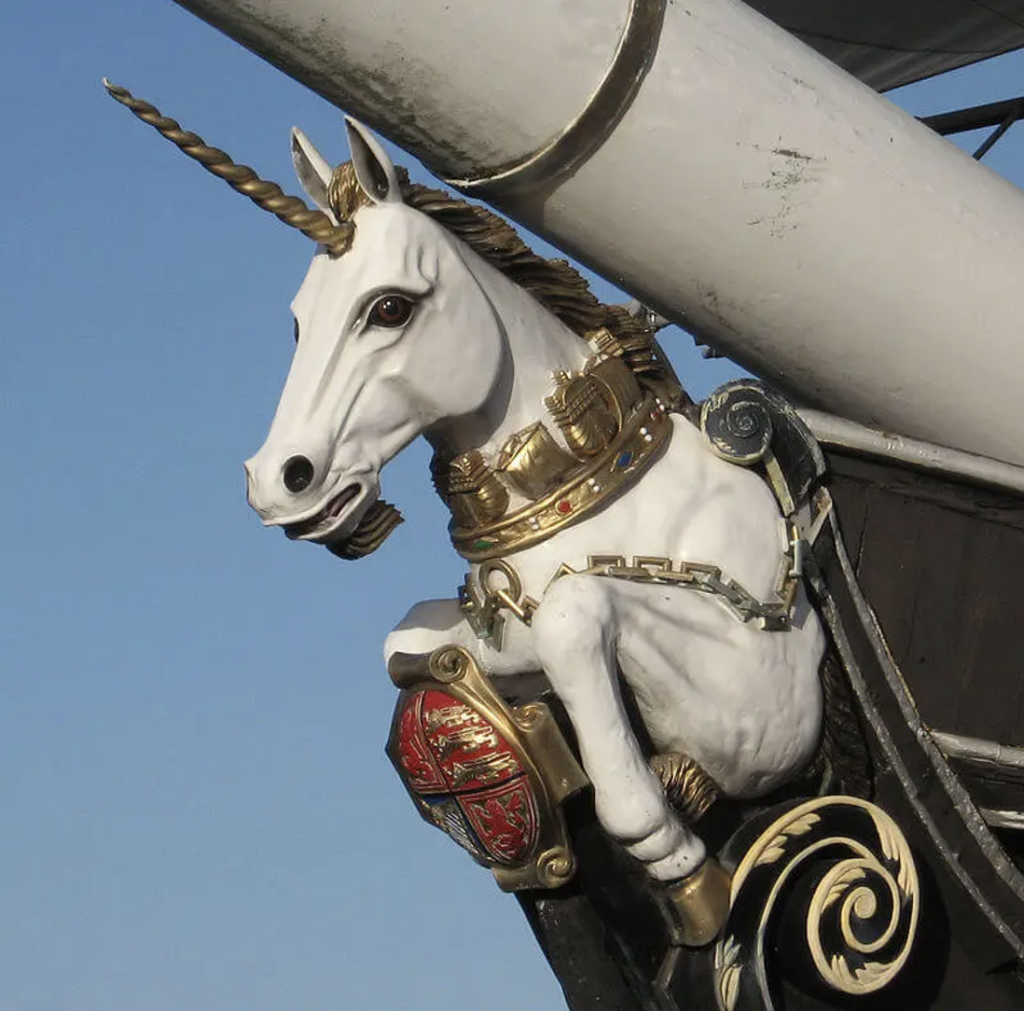
Fig. 2 Unicorn figurehead of HMS Unicorn frigate, 1824, on display Victoria Dock, Dundee Scotland (Image public domain)
The prolific English diarist and naval administrator Samuel Pepys (1633–1703) recorded his consternation on Monday, December 13, 1663 at the vandalism and destruction of a figurehead of Oliver Cromwell—not out of political sympathy, but because of the cost to the government of replacing the figurehead with the representation of some other person or creature.
By late 1690s tighter fiscal control over naval expenditures resulted in smaller and less elaborate figureheads except on First Rate ships, which were the largest in the fleet, eventually with more than 850 men and 100 guns. They often carried as a figurehead a stylized lion but by mid-18th c., other designs were approved for British warships. Among these were classical, allegorical, and historical figures, as well as animals and birds or mythical beasts like unicorns (Fig. 2).
Mythological heroes were very common subjects for figurehead. One such carving is that of Ajax. In Homer’s epic poem, The Iliad, Ajax is a great warrior who embodies the warrior spirit, yet, also was subject to dishonor and death. The figurehead below (Fig. 3) came from HMS Ajax (1846), a 74-gun, third-rate ship.
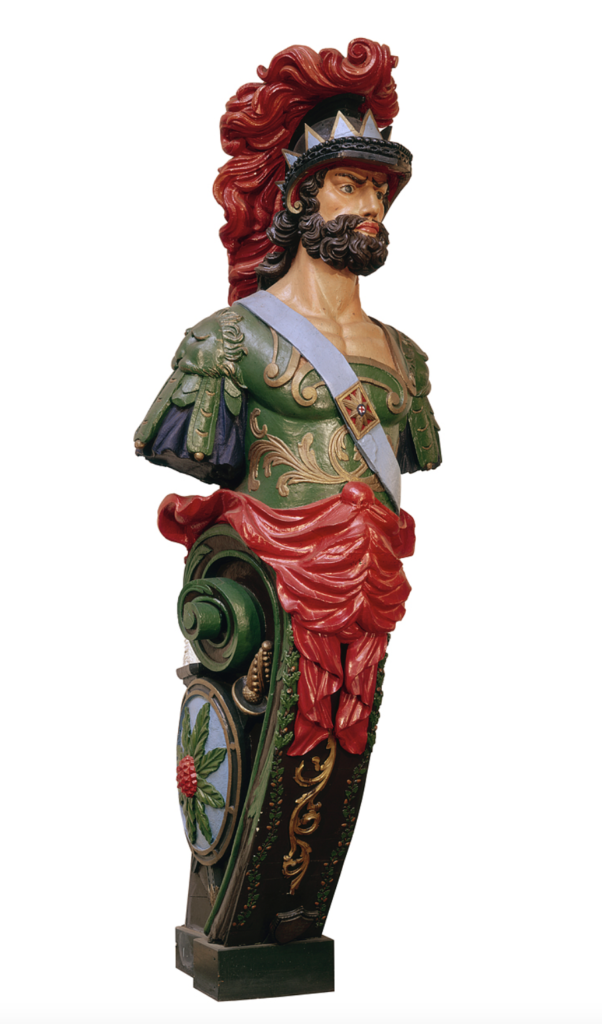
Fig. 3 Ajax figurehead, HMS Ajax, 1809, refurbished 1846, National Maritime Museum Greenwich (Image courtesy of National Maritime Museum, Greenwich).
Not being constrained by the government purse, the owners of merchant ships were less restricted in their choice of figureheads. Ships of the merchant fleet were often graced with figureheads representing family members, historical, literary, or political figures, or animals. Owners could decide if they wanted full-, three-quarter, or bust-length representations. They also had the option of buying generic figureheads that were crafted in some workshops of carvers..
Colorfully painted and using gold gilt, the carvings were vibrant displays of power and wealth. Commanding officers of Royal Navy ships might choose to add gold gilt to their ships, paying for it from their own resources, either from personal wealth or prize money. There were about 150 workshops in Great Britain in the 18th and 19th centuries that were carving figureheads. Most of the carvers were men, but there were some women artisans as well. One of the largest figureheads, created for HMS Warrior (1860), weighed 2 ½ tons (Fig. 4).
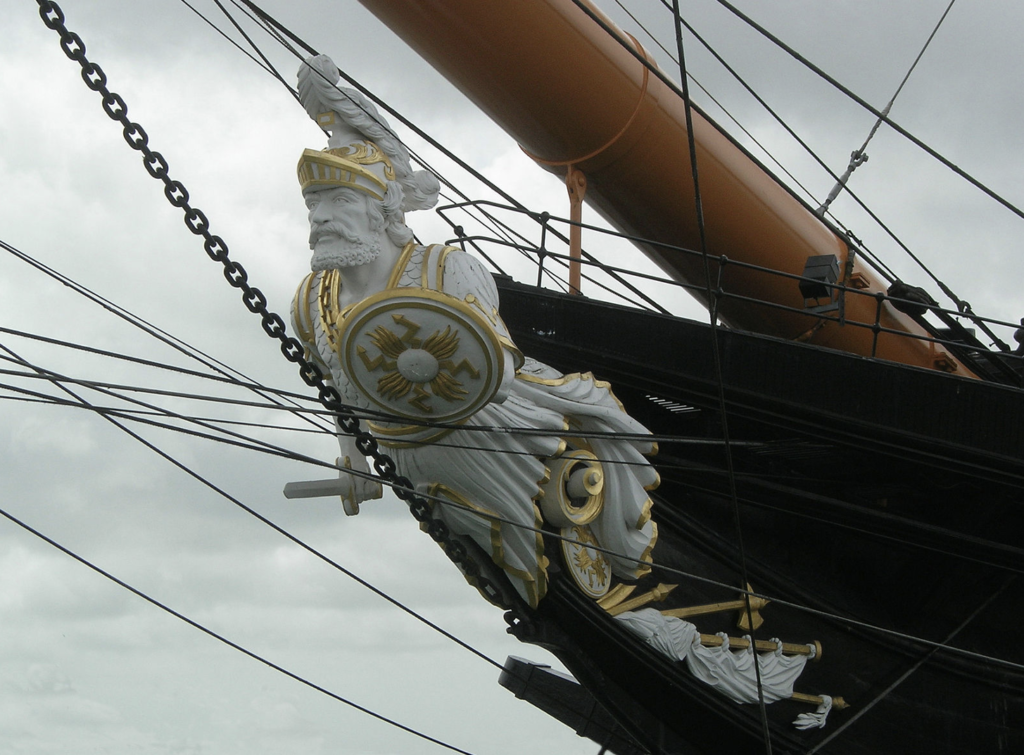
Fig. 4 Figurehead of HMS Warrior, 1860, photo by Remi Jouan, (Image public domain)
With the passing of the construction of wooden ships in the second half of the 19th century, figureheads on the waterfronts of ports began to decline. With the advent of new technology and the introduction of iron steamships which had no need for strong wood to strengthen the bow, there was no longer a need for stem-posts on which figureheads sat. The need for the figurehead and those who crafted it diminished. In the 20th century, figureheads would be replaced by ships badges and insignia. The British battleship HMS Rodney (1928) was the last British warship to have a figurehead.
Figureheads were more than representations of mythical and historical creatures and individuals or personifications of things in nature; a ship’s crew considered them totems of good fortune, safety, success, and victory. They were symbols of loyalty for crews and of the ship’s spirit. They were artifacts of inspiration, patriotism, pride, and power. American poet Henry Wadsworth Longfellow wrote of such things in his 1849 poem “The Building of the Ship.” He wrote:
And at the bows an image stood,
By a cunning artist carved in wood,
. . . . . . . . . . . . . . . . . . . . . . . . . . . . .
On many a dreary and misty night,
‘T will be seen by the rays of the signal light,
Speeding along through the rain and the dark,
Like a ghost in its snow-white sark,
The pilot of some phantom bark,
Guiding the vessel, in its flight,
By a path none other knows aright!
Many a sailor would affirm his words.
More than nautical decoration or inspiration, figureheads were used for easy and quick identification of ships by workers who might or might not be literate and who needed deliver cargo for loading, parts, or other items for the ship while it was in port. The figurehead served as an easy means of visual identification on the crowded waterfront. It became a pseudonym of the vessel.
One of the most famous American ship figureheads is from the clipper ship David Crockett that was built by the Greenman & Co. Shipyard in Mystic, Connecticut and launched in 1853. The ship was famous for her fast voyages between New York City and California. Now part of the collection of the San Francisco Maritime Museum, the figurehead stands as boldly as ever. It portrayed not only a remarkable American, but one who personified the spirit of the age during which the ship was active.
Figureheads were not the only pieces of carved wood on ships. One could finds decorative stern boards, gangway boards, quarterboards, nameboards, trailboards, lantern posts (“jack posts”), catheads, and gun port lids–the latter, often had carved lions. Study of these carvings leads one at times into the realm of heraldry and the heraldic devices as well as other decorative arts used on British and European ships.
Though the ship figurehead passed from the waterfront, it remained in popular culture well into the 20th century and drawings and replicas, large and small, could be found on items such as cigarette card, porcelain figures, and bookends.
Viewing a ship figurehead today is a reminder of strong influence of the sea upon history. Consciously and subconsciously, the has shaped the lives of countless people and cultures. Figureheads are large, unusual, and magnificent pieces of art, skillfully crafted by known and unknown woodcarvers. Each carving tells a different story with multiple facets—ship, figure, legend, lore, history, crew, owner or nation, identity, economics, conflict, discovery, and a score of other subjects. To see them is to remember that whether we travel to distant parts of the globe or distant parts of the universe, we take with us our values, beliefs, creativity, and dreams.
Further Reading
Brewington, Marion V. Shipcarvers of North America. New York: Dover Publications, reprint ed., 1972.
Bucknell, Clare. “Figureheads.” London Review of Books 42:22 (19 November 2020), available at: https://www.lrb.co.uk/the-paper/v42/n22/clare-bucknell/figureheads.
Pritchard, Sue and Jeremy Mitchell. Figureheads on the Bow of the Ship. Greenwich, London: National Maritime Museum, 2020.
Pulvertaft, David. Figureheads of the Royal Navy. Barnsley, South Yorkshire, UK: Seaforth Publishing, 2011.
Pulvertaft, David with Kevin Dean. The Warship Figureheads of Portsmouth. Cheltenham, UK: The History Press, 2010.
Stackpole, Edouard A. Figureheads & Ship Carvings at Mystic Seaport. Mystic, CT: The Marine Historical Association, Inc., 1964.
Stammers, Michael. Figureheads & Ship Carving. Annapolis, MD: Naval Institute Press, 2005.
Thomas, P. N. British Figurehead and Ship Carvers. Albrighton, UK: Waine Research, 1995.
Thornton, Peter. Form and Decoration Innovation in the Decorative Arts 1470–1870. London: Weidenfeld & Nicolson, 1998.
Timothy J. Demy is a professor at the U.S. Naval War College (Newport, RI) and retired Navy chaplain. He is a graduate of the University of Cambridge with a master’s degree in international relations. Elsewhere, he earned doctorates in historical theology and also in the combined fields of technology and the humanities. The author and editor of numerous books and articles, he is an avid bibliophile and classical music lover.